 Most viewed - CHIBA 千葉県 Most viewed - CHIBA 千葉県 |
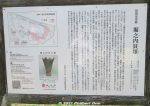
It's hard to discern, but Horinouchi Kaizuka Shell Mound is as long as 225 meters and 100 meters wide. 3 viewsPink portion in the diagram on the upper left shows where the shells, animal bones (mostly boar and deer) and other food waste were tossed on the hillsides during 4,000 to 2,500 years ago (Jomon Period). They form a horseshoe shape on the hill.
The mound was a central feature of the Jomon Period cluster of homes in this area. Since the late 19th century (Meiji Period), many digs and research on this shell mound have been conducted by archaeologists. However, there are still unknown things about mound.
|
|
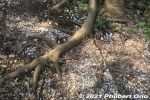
While walking through Horinouchi Kaizuka Shell Mound, we indeed saw many pieces of shell or pottery on the ground.3 views
|
|
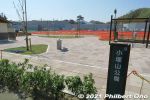
Next was Kozuka-yama Park. There are restrooms. 小塚山公園3 views
|
|

If you started the hike at Kita-Kokubun Station, Junsai-ike Pond Ryokuchi green belt park is the first substantial park where you can rest or have lunch. Large pond and cherry blossoms. じゅん菜池緑地3 views
|
|
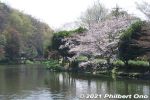
Junsai-ike Pond じゅん菜池3 views
|
|
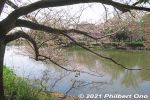
じゅん菜池3 views
|
|
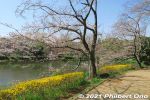
Some cherry blossoms along Junsai-ike Pond. じゅん菜池3 views
|
|
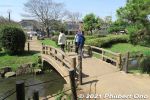
Small bridge in the middle of Junsai-ike Pond.3 views
|
|
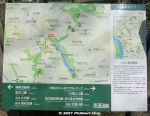
Map and where we are now.3 views
|
|
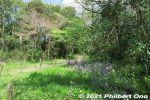
Lush trees and shrubs in Konodai Ryokuchi Park. 国府台緑地3 views
|
|
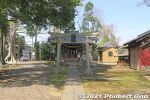
Konodai Tenmangu Shrine dedicated to Michizane, scholar deity. Stone lanterns behind the torii date from 1863. 国府台天満宮3 views
|
|
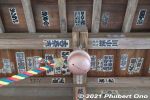
Ceiling and bell.3 views
|
|
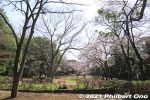
Satomi Park is the site of Konodai Castle occupied by the Satomi Clan who ruled the Boso domain in present-day Chiba during the 16th century. Almost nothing remains though. 国府台城3 views
|
|
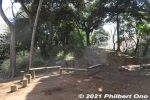
Places to sit in the park.3 views
|
|
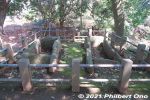
The Akedo Kofun burial mound stone coffins date from the 6th century. They were discovered in 1479. The dirt mound over the coffins fell away to expose the coffins which contained samurai armor, swords, etc. 明戸古墳石棺3 views
|
|
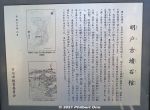
About the Akedo Kofun burial mound. The diagram shows a keyhole-shaped burial mound. The stone coffins are on the top of the round hill. This burial mound has been a noted site since the Edo Period. 明戸古墳石棺3 views
|
|
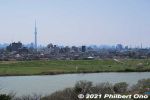
View of Edogawa River from Satomi Park. Across the river is Koiwa and Shibamata. Tokyo Skytree can also be seen. 江戸川3 views
|
|
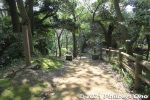
At the top of this small hill is Ichikawa city's highest point (elevation).3 views
|
|
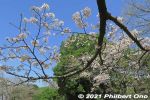
3 views
|
|
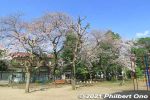
Satomi Park playground.3 views
|
|
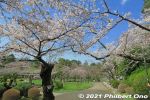
Nice cherry blossoms at Satomi Park, Ichikawa.3 views
|
|
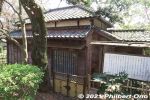
Shien-soja (紫烟草舎).3 views
|
|
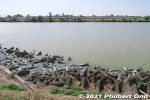
Edogawa River3 views
|
|
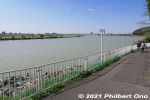
Edogawa River3 views
|
|
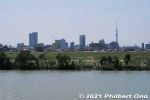
Edogawa River3 views
|
|

Old drawing of Ichikawa Sekisho. It was operated in together with staff on the opposite side (Koiwa) of the river until it was abolished in 1869. The opposite side of the river (Koiwa) also has a signboard marking the sekisho location. 市川関所跡3 views
|
|
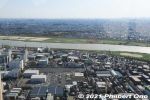
View from I-Link Town Observatory, looking west toward Edogawa River. This deck is open 9 am to 10 pm. Closed on the first Monday of the month and during Dec. 29 to Jan. 3.3 views
|
|
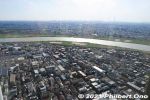
Looking west toward Edogawa River. On clear days, Mt. Fuji can also be seen.3 views
|
|
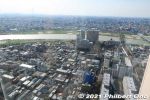
Looking west toward Edogawa River. The JR Sobu Line can be seen.3 views
|
|
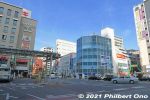
In front of Ichikawa Station, the building (Sun Plaza 55) on the left has a coffee shop and bakery operated by Yamazaki Baking.3 views
|
|
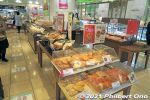
Yamazaki Plaza Ichikawa, a bakery operated by Yamazaki Baking in front of Ichikawa Station. Freshly baked in their own hometown, looks yummy.3 views
|
|
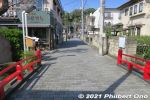
"Mamasan" is the temple's mountain name. Not the same as a mama-san operating a Japanese bar. Photo shows Mama no Tsughihashi Bridge leading to the steps going up to Guhoji Temple on a wooded hill. 真間の継橋3 views
|
|
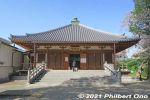
After Niomon Gate, this is the first building you see, Soshido Hall dedicated to Nichiren, founder of the Nichiren Buddhist sect. Reconstructed in 2010 on the 700th anniversary of Nichiren's death. 祖師堂 3 viewsThere are other temple buildings spread out on the hill.
|
|
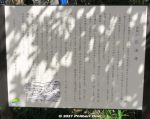
Guhoji is a Nichiren Buddhist temple founded by Priest Gyoki in 737. It's on a small hill noted for cherry blossoms and autumn foliage.3 viewsPriest Kobo Daishi (Kukai) later reconstructed and expanded the temple in 822. Tokugawa Ieyasu, before he became shogun, granted the temple ownership of its temple grounds in 1591. In 1695, Mito Komon named the temple's tea ceremony room "Henrantei" (遍覧亭). In 1888, the entire temple was destroyed by fire. The present structures were reconstructed in 1890.
|
|
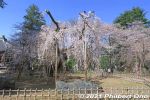
Guhoji's 400-year-old weeping cherry blossom tree is named "Fushihime Sakura." 伏姫桜3 views
|
|
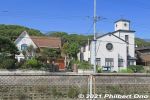
Western-style buildings along Mama River. The Christian church on the right is the Japan Evangelical Lutheran Church in Ichikawa and a National Tangible Cultural Property. 日本福音ルーテル市川教会【国登録有形文化財】3 views
|
|
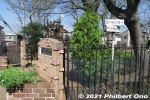
Small athletics field.3 views
|
|
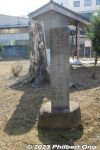
Monument marking the 60th anniversary of Emperor Hirohito's reign.3 views
|
|
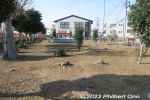
3 views
|
|
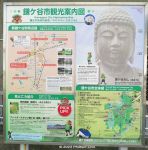
Kamagaya Daibutsu is a longtime symbol of Kamagaya.3 views
|
|
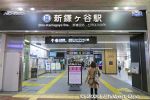
Hokusō Line Shin-Kamagaya Station 新鎌ヶ谷駅3 views
|
|
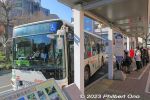
Local bus at JR Abiko Station south entrance. Took the bus to Lake Tega.3 views
|
|
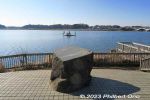
Welcome to Lake Teganuma.3 views
|
|
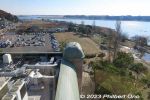
View from Mizu no Yakata (Water Pavilion) lookout tower.3 views
|
|

View of Lake Teganuma from Mizu no Yakata (Water Pavilion) lookout tower.3 views
|
|
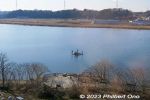
View of Lake Teganuma from Mizu no Yakata (Water Pavilion) lookout tower.3 views
|
|
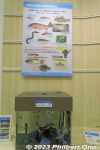
Mizu no Yakata also has a small exhibition room of local wildlife. Lake fish here.3 views
|
|
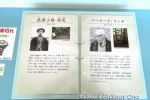
Book about Abiko's past celebrities.3 views
|
|

Book about Abiko's past celebrities.3 views
|
|
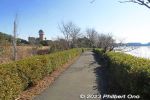
Walking along Lake Tega to Lake Tega Park.3 views
|
|
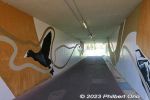
Tunnel below the road.3 views
|
|
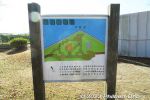
Small park for past literary figures who were active in Abiko.3 views
|
|
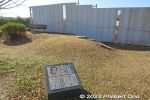
The park was mostly closed due to renovations..3 views
|
|
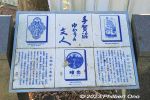
3 views
|
|
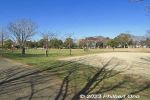
Lake Tega Park 手賀沼公演3 views
|
|
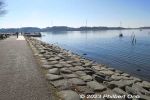
With clear lakeside views, finally seems like you're at a lake here.3 views
|
|
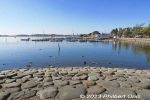
3 views
|
|
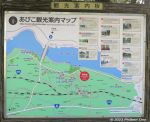
Lake Teganuma map. Possible to walk back to Abiko Station.3 views
|
|
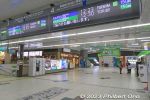
JR Kashiwa Station turnstile.3 views
|
|
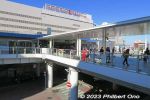
JR Kashiwa Station built Japan's first elevated pedestrian walkway in 1973. The station has a network of pedestrian walkways. ペデストリアンデッキ3 views
|
|
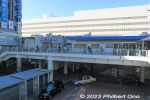
JR Kashiwa Station East exit pedestrian walkway.3 views
|
|
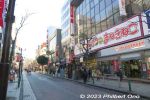
3 views
|
|

Capsule toys in Kashiwa.3 views
|
|
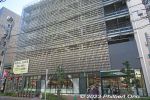
3 views
|
|
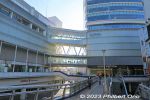
Kashiwa Station west exit area also has large stores.3 views
|
|

Tobu Line stations.3 views
|
|

Nagareyama-ōtakanomori Station is on the flourishing Tsukuba Express train line running between Akihabara in Tokyo and Tsukuba in Ibaraki Prefecture. Map of Nagareyama OtakanoMori Station area.3 views
|
|
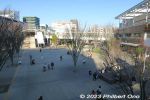
Nagareyama Otaka-no-Mori Station west exit has this large space where they hold events.3 views
|
|
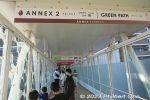
Overpass to Annex 2 mall.3 views
|
|
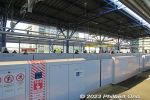
Nagareyama Otakanomori Station platform on the Tsukuba Express.3 views
|
|

Saginuma Castle Park has two kofun burial mounds labeled as Mound A (A号墳) and Mound B (B号墳). They were discovered here in 1966. Mound A is keyhole-shaped. Mound B includes a stone coffin.3 viewsSaginuma Tumuli date from the latter 6th century, based on haniwa sculpture pieces excavated from Mound A in 1966. The mounds are 20 to 25 meters long.
|
|
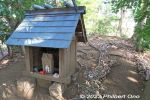
Mound A tumulus (A号墳) at Saginuma Castle Park.3 views
|
|
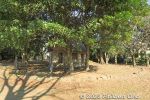
Mound B and stone coffin hut.3 views
|
|
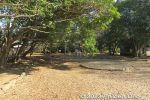
3 views
|
|
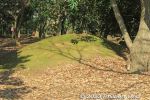
3 views
|
|
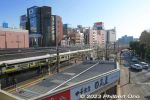
JR Tsudanuma Station 3 views
|
|
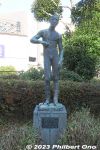
JR Tsudanuma Station south exit has this male statue.3 views
|
|
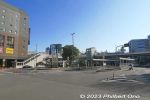
JR Tsudanuma Station south side 3 views
|
|
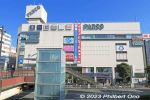
Tsudanuma PARCO operated here since July 1, 1977. Closed on Feb. 28, 2023. 津田沼パルコ3 views
|
|
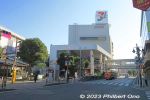
From JR Tsudanuma Station north exit, a short walk to Shin-Tsudanuma Station on the Shin-Keisei Line. 新津田沼駅3 views
|
|
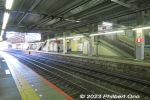
Shin-Tsudanuma Station platform.3 views
|
|
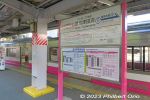
Keisei-Tsudanuma Station platform. 京成津田沼駅3 views
|
|
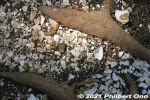
While walking through Horinouchi Kaizuka Shell Mound, many pieces of shell or pottery on the ground. Still here, after thousands of years!2 viewsRead more about this shell mound here: https://ichikawashi.jp/horinouchi/index_en.html
|
|

Junsai-ike Ryokuchi Park is a nature area where the flora and fauna are not to be disturbed. じゅん菜池緑地2 views
|
|
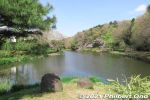
Some cherry blossoms along Junsai-ike Pond. じゅん菜池2 views
|
|
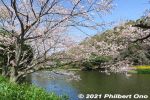
Cherry blossoms along Junsai-ike Pond in late March. じゅん菜池2 views
|
|
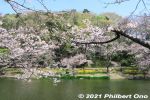
Cherry blossoms along Junsai-ike Pond. じゅん菜池2 views
|
|
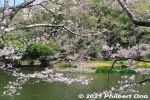
Cherry blossoms along Junsai-ike Pond. じゅん菜池2 views
|
|
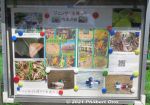
Photos of the park's flora and fauna by a local environmental group.2 views
|
|
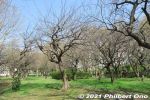
Plum blossom trees near Junsai-ike Pond. 2 views
|
|
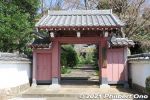
The trail passes by a few temples like Ekoin Betsuin Temple. This is the temple gate. 回向別院2 views
|
|
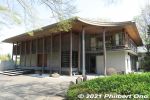
Ekoin Betsuin Temple's main hall rebuilt in 2009. There's actually a cafe (Cafe Terrace Ekoin) on the 2nd floor. It belongs to the Jodo-shu Buddhist sect and is a branch of Ekoin Temple in Ryogoku, Tokyo. 回向院市川別院源光寺2 views
|
|
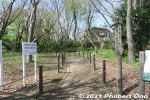
Follow the trail to Satomi Park next.2 views
|
|
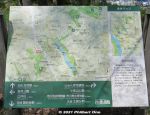
2 views
|
|
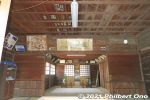
Inside Konodai Tenmangu Shrine. 国府台天満宮2 views
|
|
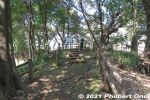
Satomi Park also has the Akedo Kofun burial mound complete with two stone coffins exposed on the mound. 明戸古墳石棺2 views
|
|
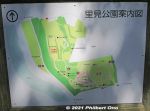
Map of Satomi Park. The burial mound is on the upper part next to the red, dotted oval on the map. The park is next to Edogawa River.2 views
|
|
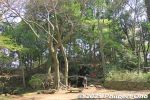
Satomi Park, near the burial mound.2 views
|
|
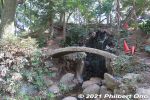
Satomi Park2 views
|
|
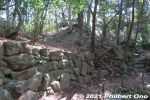
2 views
|
|
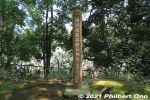
Marker indicating Ichikawa city's highest point (elevation). A whopping 30.1 meters above sea level.2 views
|
|
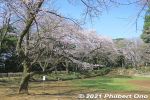
Cherry blossoms in Satomi Park. 2 views
|
|
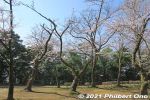
Cherry blossoms in Satomi Park. 2 views
|
|
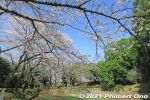
Cherry blossoms in Satomi Park. 2 views
|
|
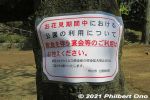
Sign on a cherry tree saying that no hanami flower-viewing picnics are not allowed here due to Covid-19.2 views
|
|
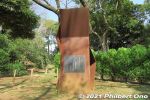
Poetry Monument for So Sakon's poem. 宗 左近2 views
|
|

Poetry Monument for So Sakon's Ichikawa poem. He was a longtime resident and honorary citizen of Ichikawa . 宗 左近2 views
|
|
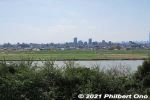
Edogawa River.2 views
|
|
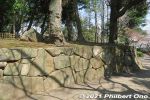
Castle-like stone foundation.2 views
|
|
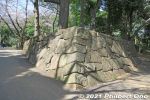
Castle-like stone foundation. Satomi Park is the site of Konodai Castle. However, this stone foundation is not original.2 views
|
|
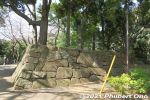
2 views
|
|
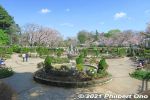
Satomi Park water fountain. This is another area of the park. Totally different landscape. This was the main site of Konodai Castle. 国府台城2 views
|
|

Satomi Park water fountain. 2 views
|
|
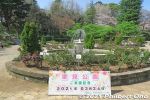
Satomi Park visit date.2 views
|
|
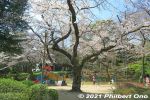
2 views
|
|
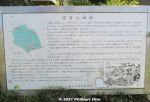
Being the site of Konodai Castle, Satomi Park was also the site of the Battles of Konodai fought twice between the local Satomi Clan (ruler of Awa Province in present-day Chiba) and the invading Hojo Clan (from Odawara) in the 16th century. 2 viewsThe Hojo won the final battle and thereby took control of present-day Chiba. The Hojo is said to have expanded and reinforced Konodai Castle.
However, when Tokugawa Ieyasu took control of Japan, he had Konodai Castle dismantled because it had a intimidating view of his own Edo Castle.
|
|
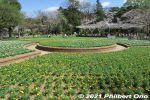
During World War II, Satomi Park was an Imperial Army base camp. It finally became a public park in 1959. Flower beds now cover the site of Konodai Castle.2 views
|
|
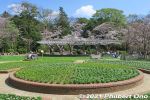
Satomi Park is also noted for roses in early summer and fall. The rose is Ichikawa's official flower. 2 views
|
|
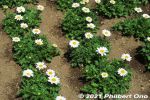
2 views
|
|
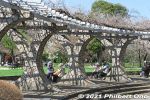
2 views
|
|
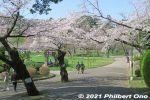
2 views
|
|
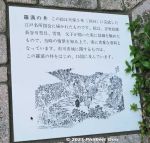
The Rakan-no-I well was actually depicted in this 1834 illustration, part of Illustrations of Edo's Noted Sights. 羅漢の井2 views
|
|
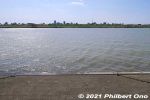
From Satomi Park, the remaining walk went along Edogawa River to the train station. 2 views
|
|
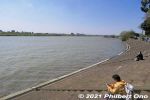
Edogawa River has a nice riverside walking/cycling path on both sides of the river.2 views
|
|
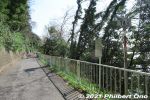
This is part of the riverside walking path. On the left is a forest on a hill. The forest is also being protected.2 views
|
|
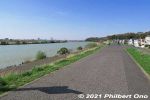
Edogawa River has a nice walking/cycling path.2 views
|
|
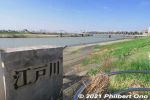
Instead of going to Konodai Station on the Keisei Line, we walked further south along the Edogawa River. Keisei Line's bridge can be seen behind us.2 views
|
|
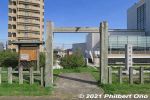
Slightly south of Keisei Line's Konodai Station next to Edogawa River is the Ichikawa Sekisho Checkpoint site. This is only a marker monument (no original structures). 市川関所跡2 views
|
|
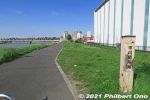
Ichikawa Sekisho marker near Yamazaki Baking.2 views
|
|
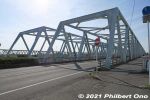
Route 14 bridge over Edogawa River. Bridges were not built over Edogawa River until after the Edo Period ended. Until then, shuttle boats were used to shuttle travelers across the river.2 views
|
|
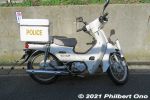
Police motor scooter.2 views
|
|
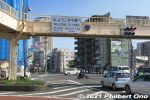
From the Edogawa riverside, we turned left on Route 14 and walked to Ichikawa Station. Welcome to Chiba! Ichikawa is one of Chiba Prefecture's cities adjacent to Tokyo. 2 views
|
|
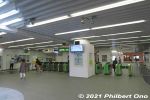
Turnstiles at JR Ichikawa Station.2 views
|
|
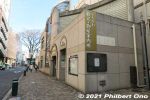
Ichikawa Tourist Information office next to Ichikawa Station. It was closed.2 views
|
|
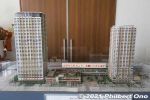
Scale model of the skyscraper buildings next to JR Ichikawa Station. On the left is The Towers West building and on the right is The Towers East. The West building has a nice lookout deck on the 45th floor.2 views
|
|
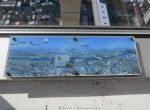
Guide to visible landmarks.2 views
|
|

Looking north.2 views
|
|
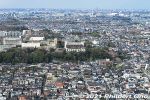
"Temple" marks the location of Guhoji Temple, famous for a 400-year-old weeping cherry blossom tree. See this album.2 views
|
|
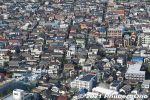
High-density housing.2 views
|
|
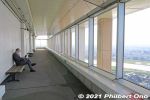
Another side of the lookout deck.2 views
|
|
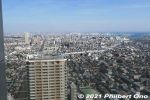
Looking east toward Chiba. The tall building in the foreground is The Towers East. The JR Sobu Line tracks can be seen on the left.2 views
|
|
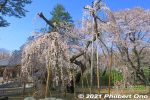
We can see that a few branches had been cut, which means the tree was larger.2 views
|
|
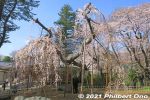
2 views
|
|
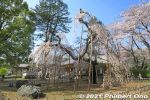
2 views
|
|
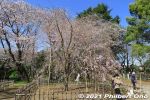
Another weeping cherry tree next to Fushihime Sakura.2 views
|
|
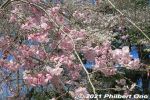
2 views
|
|
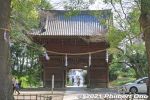
Niomon Gate rear view as you exit.2 views
|
|
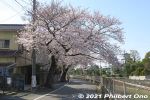
After Guhoji Temple, we walked back to Edogawa River along Mama River which had a few cherry blossoms.2 views
|
|
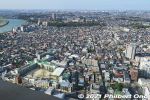
View from The Towers West lookout deck on the 45th floor. The patch of green is the hill where Guhoji is located.2 views
|
|

"Temple" marks the location of Guhoji Temple on the wooded hill.2 views
|
|
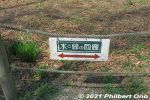
Signage for the hiking trail.1 views
|
|
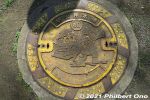
Water hose manhole for firemen.1 views
|
|
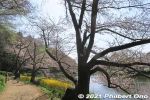
Some cherry blossoms along Junsai-ike Pond in late March. じゅん菜池1 views
|
|
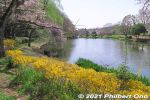
In autumn, Junsai-ike Pond is also noted for fall leaves.1 views
|
|
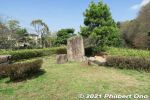
Small island in the middle of the pond.1 views
|
|
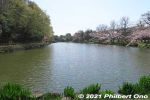
Junsai-ike Pond. No swan boats or rowboats. Only ducks. じゅん菜池1 views
|
|
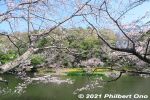
Cherry blossoms along Junsai-ike Pond. じゅん菜池1 views
|
|
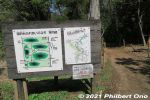
We came out of this trail which goes through into a small forest of different species of trees.1 views
|
|
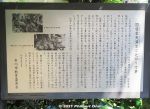
About Konodai Tenmangu Shrine and an event called Tsujikiri.1 views
|
|
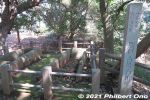
Two stone coffins on Akedo Kofun burial mound. Experts believe that they contained the remains of local nobility who ruled this area in the 6th to 7th century. Chiba Prefecture has many of these stone coffins. 明戸古墳石棺1 views
|
|
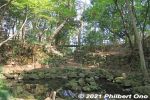
Konodai Castle remains in Satomi Park. Embankments and rocks. 国府台城1 views
|
|
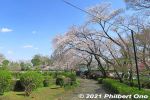
Satomi Park cherry blossoms.1 views
|
|
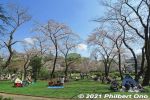
This is where most people enjoyed Satomi Park, under the cherry blossoms.1 views
|
|
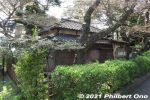
Satomi Park also has Shien-soja (紫烟草舎), the former home of famous tanka poet named Kitahara Hakushū (1885–1942) (北原白秋). He lived in this house for only a year in 1916. 1 views
|
|

About Shien-soja. It was originally located in Koiwa (Edogawa Ward, Tokyo) and moved here. (紫烟草舎).1 views
|
|
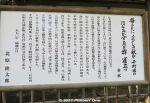
1 views
|
|
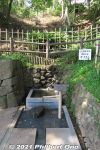
Old well on the fringe of Satomi Park named "Rakan-no-I". 羅漢の井1 views
|
|
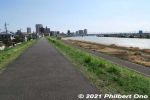
Straight ahead is the bridge for the Keisei Line. 江戸川沿い1 views
|
|
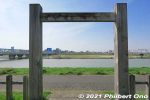
This was where people crossed the river by boat and it was a busy/important artery. The Ichikawa Sekisho Checkpoint was at the border between Shimosa (Chiba) and Musashino (Tokyo) Provinces. So the Sekisho was the border control. 市川関所跡1 views
|
|
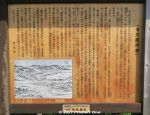
LIke other sekisho checkpoints in Edo during the Edo Period, the Ichikawa Sekisho checked for any weapons on travelers entering Edo and any women trying to escape Edo without permission. 市川関所跡1 viewsTo pass through a sekisho, travelers were required to have a travel permit (like a passport) issued by their local government official.
|
|
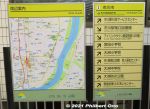
Directions at Ichikawa Station.1 views
|
|

Looking west toward Edogawa River. The JR Sobu Line (left) and Keisei Line (extreme right) over Edogawa River can be seen. The bridge in the middle is Route 14.1 views
|
|

Looking further upstream on Edogawa River. Left of the river is Edogawa (Koiwa) and Katsushika (Shibamata) Wards.1 views
|
|
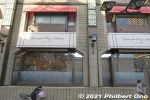
Yamazaki Plaza Ichikawa, a coffee shop and bakery operated by Yamazaki Baking in front of Ichikawa Station. This was a good place for refreshments before heading home.1 views
|
|
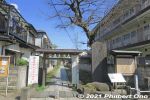
Near Guhoji is Tekona Reijindo, another temple. We didn't go to see this temple though. (Too tired walking.) Tekona Reijindo is dedicated to a local girl named Tekona who lived 2,000 years ago. 手児奈霊神堂1 viewsHer job was to fetch water from a well. She was such a beautiful girl that every man who saw her fell in love with her and wanted to marry her. They even fought over her. Even the moon fell in love with her. She got so distraught by all the attention and fighting that she drowned herself in the well. Poor girl, she was loved to death.
|
|
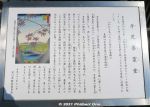
In 1501, Tekona's spirit told a priest to build a grave for her. This evolved into this temple where women pray for maternal happiness including safe childbirth and child rearing. 手児奈霊神堂1 views
|
|
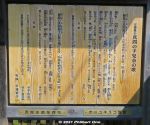
Poem about Tekona.1 views
|
|
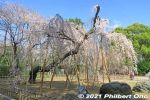
The weeping cherry tree looks different from different angles.1 views
|
|
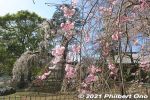
1 views
|
|
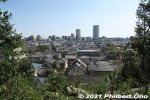
View of Ichikawa Station area from Guhoji. The two skyscrapers are The Towers East on the left and The Towers West on the right. The higher Towers West building has a lookout deck on the 45th floor.1 views
|
|
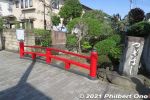
Mama no Tsughihashi Bridge near the steps going up to Guhoji Temple. The bridge is mentioned in some poems in the Man'yoshu. 真間の継橋1 views
|
|
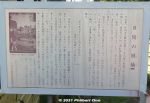
About Mama no Tsughihashi Bridge. 真間の継橋1 views
|
|
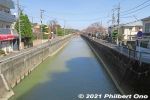
Mama River empties into Edogawa River. We later walked along Edogawa River toward Konodai Station on the Keisei Line.1 views
|
|
|
| 1947 files on 8 page(s) |
 |
 |
 |
 |
8 |
|